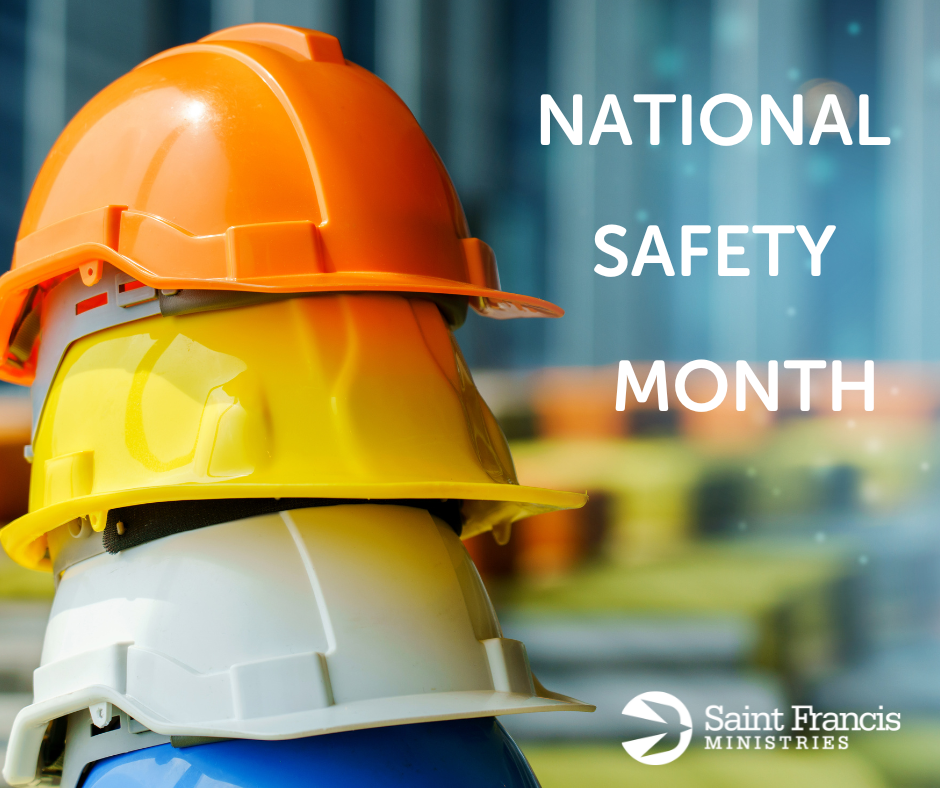Each month, we bring a focus on a different topic as a nation, and June brings National Safety Awareness Month. The National Safety Council (NSC) has identified focus areas for each week of National Safety Month.
Week 1 – Emergency Preparedness
During the Emergency Preparedness week, we can take time to ensure we have the resources and mindset to manage emergencies. When I was a young man, I joined the Boy Scouts of America. The motto of the Boy Scouts is, “Be Prepared.” There were no conditions associated with the motto, it is generic and can be very impactful. Whether you need to be prepared for a test in school, a meeting at work, or an emergency, the purpose is clear: just be prepared.
It is important we understand that we choose neither the time nor the place when an emergency will occur. Taking this into account, and the Boy Scout’s motto, there are some preparations we can make to give us confidence and competence to manage emergencies.
Saint Francis Ministries has specific emergency procedures that are designed to provide a uniform reaction to emergencies we may encounter in our offices.
Functional knowledge of first aid is an important component of emergency preparedness. Being able to identify the need and then applying first aid techniques can improve the outcome of an emergency situation.
Our preparation for a variety of emergency situations will set the conditions for the other week’s focus areas.
Week 2 – Slips, Trips, and Falls
Few situations are more embarrassing than tripping in public. Whether we actually fall or just lost some “cool points’ from the awkward situation, tripping can cause major injuries. There are two categories for falls, same-level and lower-level.
Falls on the same-level is the third leading preventable workplace injury and falls to a lower-level is the third leading fatal workplace event. Many falls can simply be avoided by paying attention to the surface you are moving across or down. Keeping your eyes on the surface and not on a phone can significantly reduce your potential to falling.
Week 3 – Heat-Related Illness
I believe most of understand the importance of hydrating for a healthy body. According to the National Safety Council, “heat-related illness accounted for 783 worker deaths and nearly 70,000 serious injuries in the United States from 1992 to 2016.” These deaths and injuries are preventable. The NSC provides some tips to prevent heat-related illnesses.
- Drink water every 15 minutes.
- If working outside, take rest breaks in the shade to cool down.
- Wear a hat and light-colored clothing when working outdoors.
- Monitor co-workers for symptoms of heat-related illness.
Did you know that hyponatremia is when the sodium in your body is abnormally low? The symptoms are similar to dehydration. The Mayo Clinic recommends drinking sports beverages when you are conducting demanding tasks resulting in increased sweating in addition to water.
Week 4 – Hazard Recognition
In order to recognize hazards, we must have situational awareness. Simply put, situational awareness is knowing what is going on around you. Having situational awareness will allow you to recognize a variety of hazards before the situation becomes emergent.
We recommend you determine how to avoid or get out of a hazardous situation by determining your “out.” What this means is to continually look for ways to remove yourself or others from a situation that could become hazardous or has already become hazardous.
Raymond Nunweiler is the Chief Support Officer for Saint Francis Ministries.





